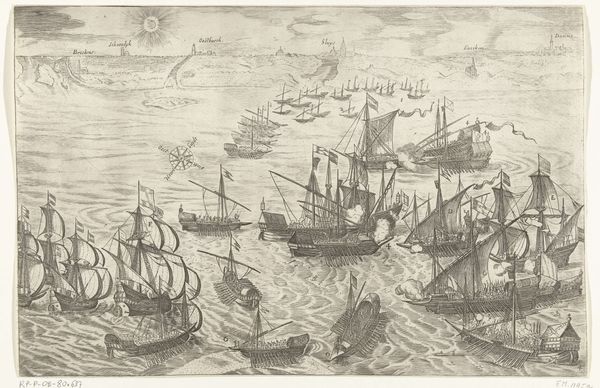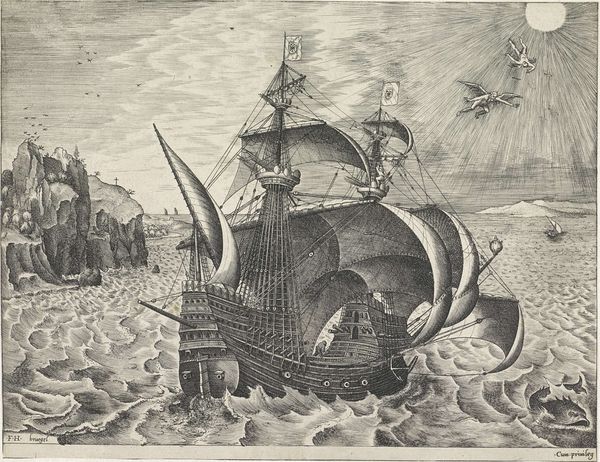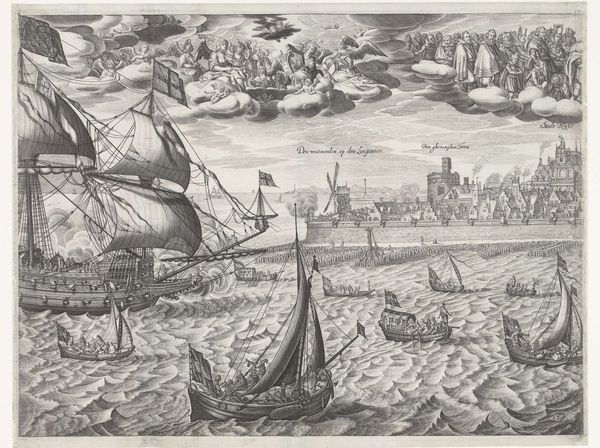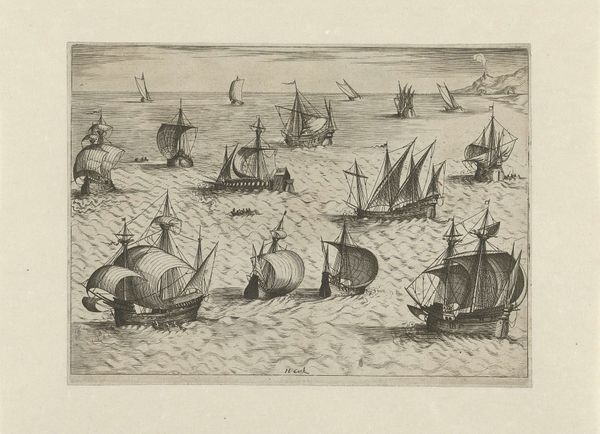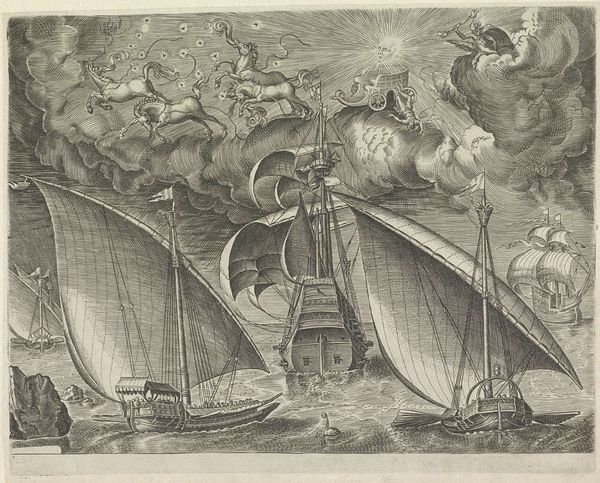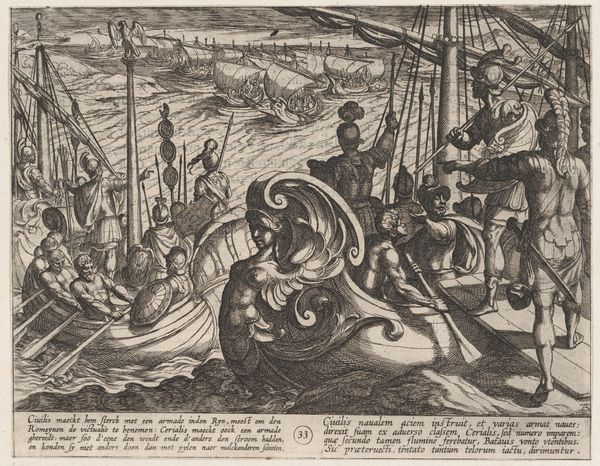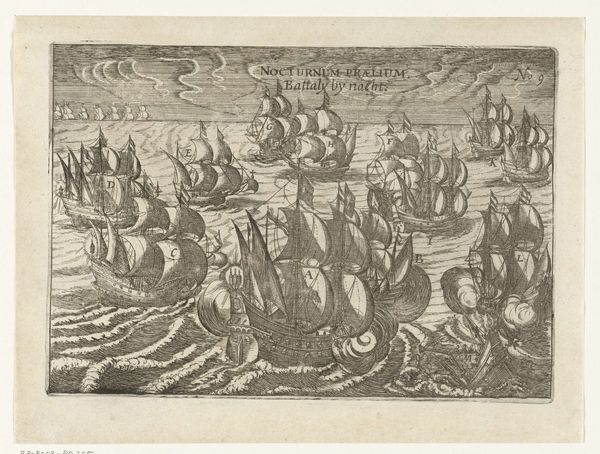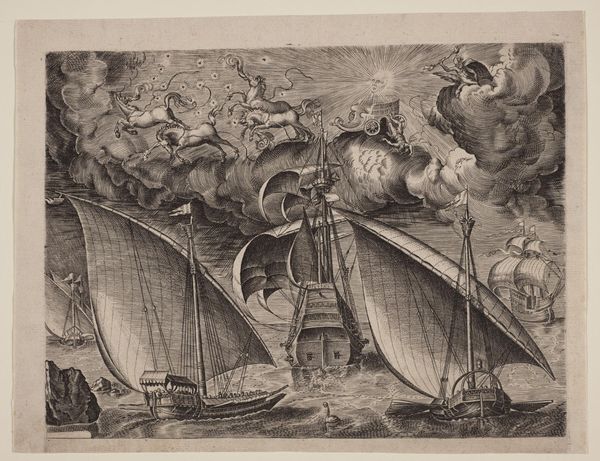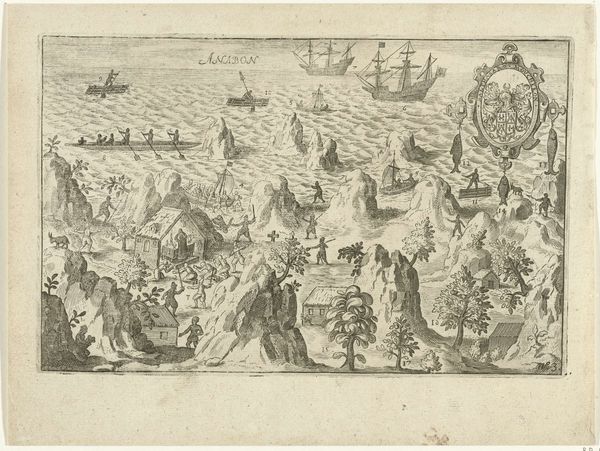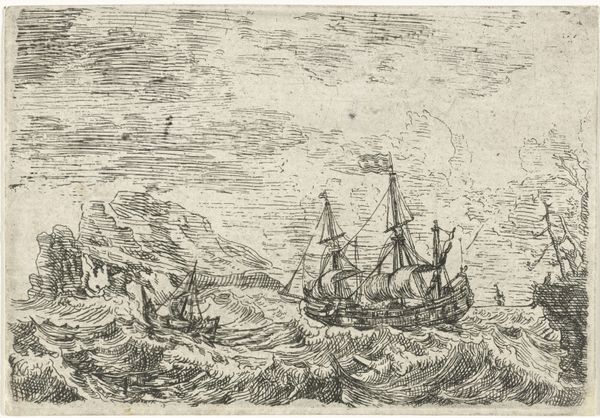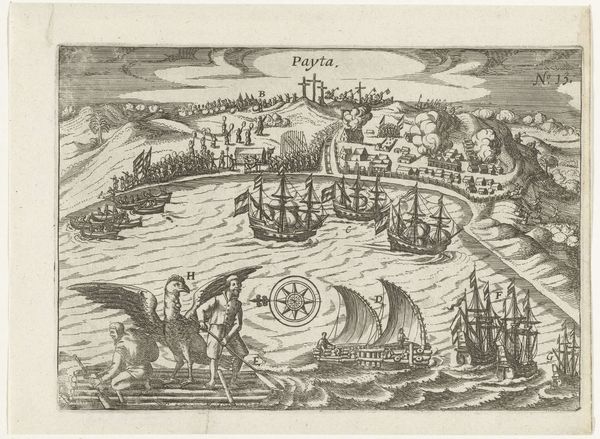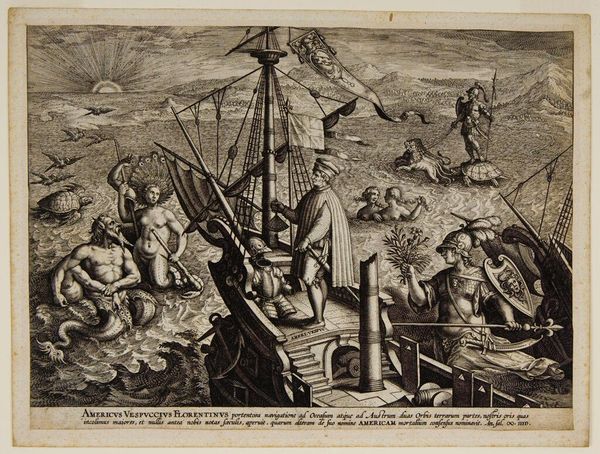
print, engraving
# print
#
landscape
#
history-painting
#
engraving
Dimensions: height 169 mm, width 235 mm
Copyright: Rijks Museum: Open Domain
Curator: This engraving, possibly created between 1603 and 1615 by an anonymous artist, is titled "Destruction of Spanish Galleys, October 3, 1602." The print, rendered in the landscape style, commemorates a historic moment through detailed depiction of naval conflict. Editor: Wow, talk about being thrown into the deep end—or should I say ocean? There's so much happening. It looks like chaos, doesn't it? Almost as if the artist dropped a handful of ships onto some swirling water and said, "Yup, that's it!" But the more you look, the more these ships, despite the frenzy, begin to suggest narrative and structure. Curator: Indeed, the composition invites careful viewing. Note how the lines of the ships interact with the lettering designating 'Oceanus Germanicus Pars' -- it serves to formally divide and, crucially, identify the depicted waters. Through the sharp contrast of light and dark via engraving, the ships in formation become complex structural entities. Editor: Structure yes, but look at how cramped and tense each area feels. Each section tells a mini story: boats ablaze, tiny figures scrambling, this gives the sense that it's not just an "us vs. them" kinda deal, but survival as well. The tiny explosions, the sheer claustrophobia must have been felt viscerally at sea during combat. I imagine that is precisely what the image intends to transmit through the medium. Curator: And don't overlook the function of these tiny details within the grand scope of naval history! The cross-hatching suggests shading as much as it delineates movement and action. Even the clouds contribute to a sky dense with premonition or the sense of a historical record unfolding for those aware of Dutch maritime achievements. Editor: Yeah, but whoa—premonition is a strong term! For me, the slightly cartoonish element of ships tossed on spindly waves reads with more wry humor. Like this huge event got crammed onto someone's sketchpad, complete with location labeling: Doesveren, Nieuport, and the like. The piece doesn't quite convey authority to my senses, and so rather feels charming despite itself! Curator: Interesting. It makes one appreciate the interplay of objectivity and affect; how historical document blends into personal response across time... Editor: Ultimately this piece's depiction serves the larger purpose: To humanize and make intimate moments of immense destruction and thus remind us how complicated "triumphs" can truly feel.
Comments
No comments
Be the first to comment and join the conversation on the ultimate creative platform.
